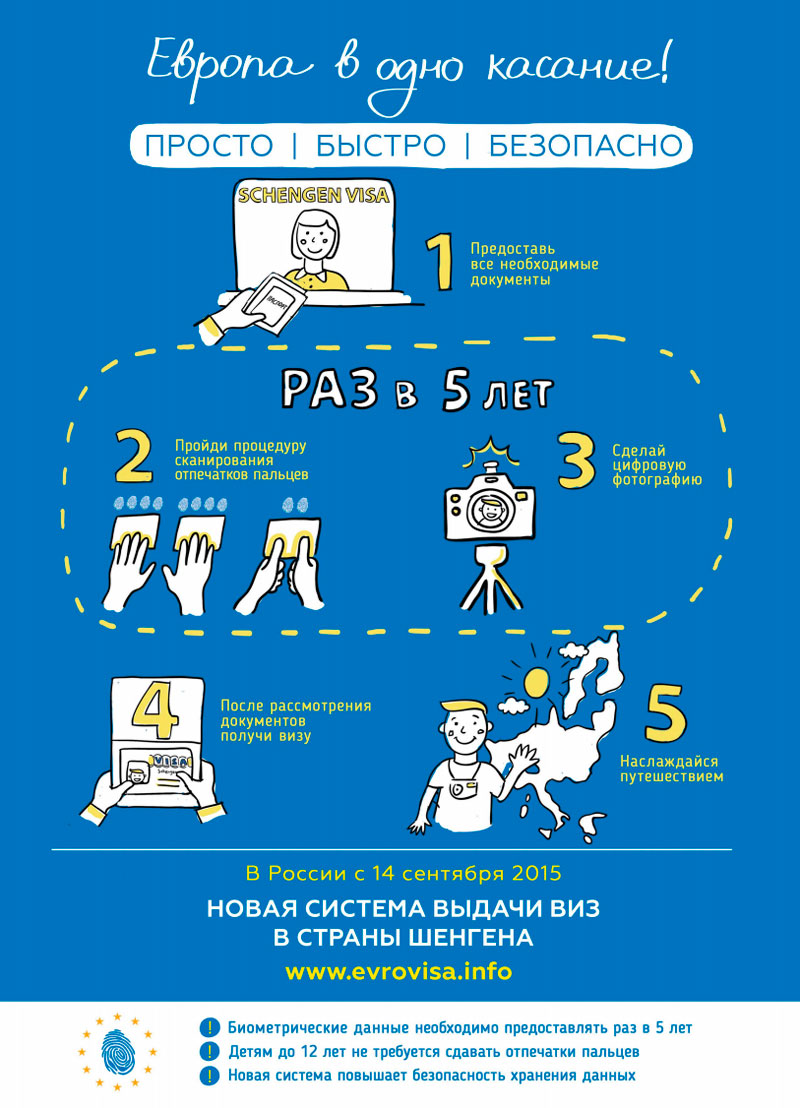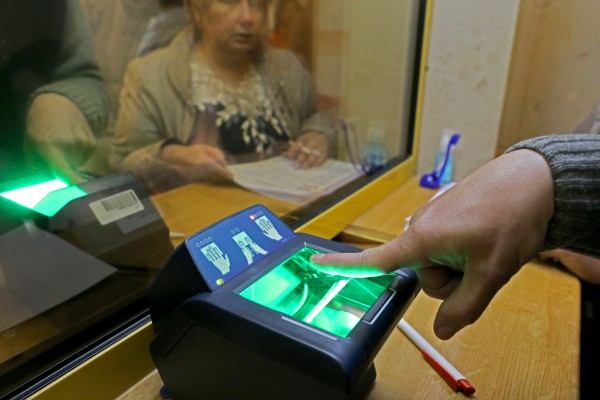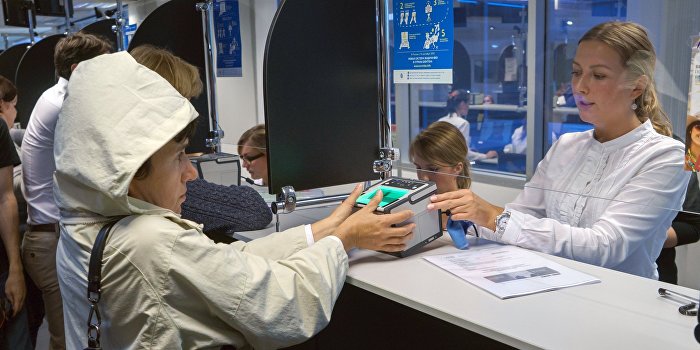How and where to submit biometrics (fingerprints) for a visa
Obtaining a visa of many countries of the world is impossible without the delivery of biometric data. Biometrics is carried out at the visa center or embassy / consulate of the country of planned stay. For example, fingerprints and a digital photo provided for visiting the USA or Britain will not be suitable for entering the Schengen territory, and vice versa. Let's take a closer look at how fingerprinting for Schengen visas is performed and when you can skip biometrics.
What is included in the biometrics procedure? It is quite simple and consists of only 2 points - the provision of fingerprints and a digital photograph. In some countries, such as the UAE, a retinal scan is performed. If, as a rule, there are no problems with photographing, then fingerprinting raises numerous questions. However, without it, documents for a visa to European countries or to the United States simply will not be accepted. In our article, we will consider the features of biometrics for Schengen - how fingerprints are taken for a Schengen visa, the nuances of the procedure, whether it is paid, etc.
Many people know that biometrics is required for a visa to the Schengen countries since 2015. But not everyone knows exactly what is included in this procedure. So, for biometrics for a Schengen visa you will need:
Take a digital photo directly when submitting documents at the consulate or visa center. A photo that meets certain parameters is entered into the common database of Schengen countries.

- Submit all 10 fingerprints. There are several ways to get through it:
- At the visa center.
- At the diplomatic mission.
- By ordering mobile biometrics to your home or office.
Important! Eye biometrics is not required for a Schengen visa.

European powers take biometric data from foreigners primarily for the sake of security. Biometric control helps prevent traveler fraud. Tourists themselves are protected from identity theft. It is worth remembering that travel agencies do not collect biometric data on their own.
Biometric data is stored in a single system for 5 years. They are valid for 59 months between all Schengen states.
Within the framework of the 5-year period, you will not need to undergo fingerprinting again and be photographed when traveling to the Schengen area. For example, a citizen's fingerprints were scanned and a photo was taken for the Polish Schengen. Less than 5 years later, this man applied for a Schengen visa to Spain. He will not need to re-provide biometric data for a visit to the kingdom.
Important! Removal of biometrics in visa centers, embassies and consulates is free of charge. Applicants do not pay any additional money other than visa fees.
Is it possible to evade biometrics
Everyone who wants to visit the Schengen countries will have to take fingerprints and take a digital photograph. Without biometric information, visa applications will not even be considered. However, in some cases, fingerprinting is not carried out. Only digital photography is provided.
Who does not give fingerprints

The following are exempt from fingerprint scanning:
- Children under 12 years old.
- Citizens whose fingerprints cannot be physically taken.
- Members of official delegations.
- Those who have been fingerprinted in the past 5 years. Unlike the above three categories of citizens, they also do not need to re-take a digital photo.
Gift: 2100 rubles for housing!
When registering via the link in AirBnB, you will receive 2100 rubles to your account.
For this money you can rent good apartments for 1 day abroad or in Russia. The bonus only works for new accounts.
When Fingerprinting Is Unavoidable
There are cases when a visa candidate will still be required to re-submit fingerprints. Even if less than 5 years have passed since the previous scan of the papillary patterns of the fingers.
- For some reason, it is not possible to confirm that 5 years have not yet passed since the last fingerprinting.
- Due to technical problems, it is not possible to copy already taken fingerprints from a single database.
- The host party has reasonable doubts about the identity of the visa applicant.
- Some diplomatic departments (for example, the Czech one) require a copy of the previous Schengen visa with a note about the passage of biometrics (VIS mark). If the document is not on hand, the finger scan and photo may need to be repeated.

When the 5-year period expires, in any case, the visa applicant will have to go again for fingerprinting and to the photographer.
Fingerprinting: how it's done

- Fingerprints are scanned in minutes.
- The fingerprinting process does not use liquids, inks, powders or other chemicals. The fingers are applied to the glass panel on a special device (first, alternately 4 fingers of each hand, then - simultaneously - 2 thumbs). It doesn't hurt and is completely safe.
- The procedure should be rescheduled if there are wounds or cuts on the fingers.
- If one or more fingers on the hand are missing, an appropriate note is made about this.
Biometrics at the Visa Application Center
In the visa center, biometrics is most often performed. After all, unlike embassies and consulates, offices of authorized organizations are located in many large Russian cities.
Fingerprints should be scanned at the same center where visa applications will be submitted. In addition, it must be done on the same day.
The procedure for passing biometrics for a Schengen visa is quite simple. It consists of the following steps:
- Registration at the visa center for submission of documents. If the organization works without an appointment, it is allowed to get an appointment on a first-come, first-served basis.
- Arrival at the visa center. Upon arrival, you should find out where the booth or window for scanning fingerprints is located, and undergo fingerprinting.
- If necessary, a digital photo can be taken in the office of the center.

Biometrics at home
Mobile biometrics is a very expensive, but very convenient and well-established service. You can order it on the websites of the visa centers of many countries of the Schengen zone. The specialist will arrive at the address indicated by the client at a predetermined time. Through an employee of the visa center, it is also allowed to submit an application and other papers for a visa.
Mobile biometrics is ordered very simply. It is available to both individuals and accredited travel agencies. Those wishing to use the service must:

- Go to the website of the required visa center.
- Select the "Mobile biometrics" section.
- Leave an electronic application.
- During the day, an employee of the visa center contacts the applicant.
- The parties discuss all the details.
- On the appointed day, a specialist with all the equipment will come to the client. A prerequisite is to provide for him:
- Access to a power source.
- Internet access.
- Table and chairs available.
- An isolated workplace (if possible, a separate room).
- The citizen will be fingerprinted, photographed and visa documents will be accepted. For security reasons, the entire process is recorded on a video camera.
The cost of the service is 150 euros per person (consular and service fees are not included in this amount). However, the more applicants, the cheaper mobile biometrics will cost. For example, a group of 10 people will spend 50 euros for each. But here it is worth considering the following. If the biometrics is ordered to a remote city, the travel and travel expenses of the visa center employee are additionally paid.
When crossing the Schengen area, an important point should be kept in mind. Border guards have the right to ask the visa holder to provide fingerprints in order to compare them with information from a single database. If a discrepancy is found, an additional identity check awaits the foreigner.





